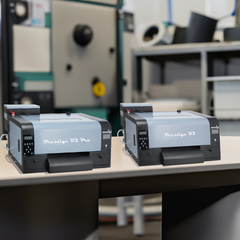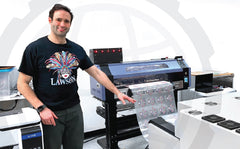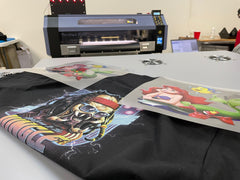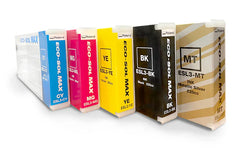Discover how Digital Hybrid screen printing may be right for you.
The Digital Screen Printing Hybrid Question: Should You Do it?
The screen printing industry is changing in significant ways. First, screen printers are seeing the adoption of new garment printing technology like direct to garment (DTG) build a new market for printed garments and start to cut into their traditional customer base. Second, customer demand for limited runs and personalization is changing what is expected and demanded from traditional screen printers. As a garment decorator in today’s world, not only are you tasked with answering customers' new expectations of on-demand service and highly customizable and unique options, but you must also continue to face the challenges of printing quickly and efficiently while keeping costs and waste down and quality high.
The first solution to changing customer desires is DTG printing. The technology has come a long way since it was first introduced. Direct to garment printing now has some definite advantages over traditional screen printing - namily the ability to produce high color, short runs. If your target market is one-off designs or total customization then DTG remains the best technology to serve your needs. However, it struggles when it comes to cost per shirt and speed on medium to long runs when compared to screen printing.
Screen printers wanting to print on a variety of different shirt types, including cotton, polyester and 50/50, have the option of hybrid screen printing. Hybrid printing is exactly what you might think - a hybrid of screen printing and DTG. Hybrid digital screen printing is straightforward and simplifies the screen printing process by reducing the number of screens used per job to only one. This one screen is used to first print a white, water-based underbase on the garment. There is no need to flash this underbase; you can then print directly, wet on wet, colorful, detailed CMYK images using the hybrid print head.
Unlike DTG printing, the screen-printed underbase eliminates the need to pretreat the garments before printing. A printer no longer needs to purchase a large, six color screen printing press, nor do they need to purchase or spend time pretreating garments as they would if printing regular DTG.
There are three different hybrid digital printers on the market. There is the M&R Digital-Squeegee™, the ROQ Hybrid and the LawsonZeus V Digital Hybrid Squeegee-Jet. The first two require a special oval printing press and pre- and post-treatment of the digital print. Only the Lawson Zeus can be paired with any screen printing press, manual or automatic
The Hybrid Squeegee-Jet also reduces the learning curve that inevitably occurs when someone first gets into screen printing. The digital component of the hybrid machine means that the operator no longer needs the same level of technical knowledge or experience that would have been necessary if using the silk screen method alone to print multi-color designs. Gone are the days of registering multi-color, worrying about screen tension (Newtons), squeegee & flood pressure, etc.
Combining the versatility of the two different printing methods means that the garment decorator will no longer be limited in the types of jobs they can accept. Nearly any order - larger or small, two color flat graphics or photorealistic images - can be printed in house relatively quickly and similar low costs of screen printing. The hybrid printing method works for virtually any type of garment, from thicker hoodies to synthetic fabrics, 50/50 blends to 100% cotton. This is useful for all types of customers with all kinds of orders, but will prove especially useful in keeping up with the trends of more complex prints on athletic wear and performance fabrics as well as the realistic designs that are now popular in the entertainment industry.
Whoever you are as a printer, whether you are just starting out or actively expanding to keep up with your client base, the Zeus V Digital Hybrid Squeegee-Jet could be an exciting and effective way for you to deliver consistent, personalized, high-quality prints in a time and cost efficient manner. This is the direction the industry is heading. If you don’t at least consider it, you risk being left in the dust of your competitors.





